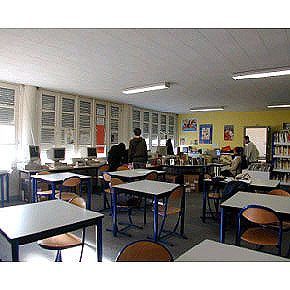|
|
Shading systems and glare protections
Solar control reduces heat gains, and thus, the risk of overheating, generated by the absorbed solar radiation. It also contributes to avoid glare resulting from the bright glazing surfaces. Solar control of openings can be performed by integration of shading devices (overhangs, fins, louvers, blinds, awnings etc.), or advanced glazing such as selective and dynamic. To select a shading device the following need to be taken into consideration: site latitude, orientation and tilt of openings, glazing type, daylight requirements, building integration (i.e. spatial requirements, thermal bridging, aesthetics). It is recommended, when applicable, to give preference to shading devices than can perform more than one function to serve both thermal and visual needs year round. For example movable louvers can provide shade during summer and act as light shelves in winter when sunlight is desirable. External shading is more efficient because it obstructs solar radiation before entering the space.

|

  
|
|
It can also prevent glare by obstructing direct sunlight and sky view. The combination of external shading devices with internal light louvers and curtains give very good results against glare and ensure privacy. South oriented openings can be efficiently shaded with overhangs and horizontally placed louvers whilst a combination of both horizontal and vertical shading devices is appropriate for East and West orientations. North openings receive limited direct radiation in summer and, depending on climatic conditions and building occupancy pattern, can be shaded internally. Dynamic glazing (photochromic, electrochromic, thermochromic) change transmissivity when the level of solar radiation is above a given rate. They reduce the incoming solar radiation but at the same time reduce daylight levels. Spectrally selective glazing allows light (50% - 70%) to enter the building but obstruct (about 80%) infrared radiation that carries most of the heat. The glazing performs very good for building uses with high daylight requirements and long cooling seasons.
Efficient shading design should not reduce daylight beyond the recommended levels for a given task nor inhibit view out if desired.
Solar control on the opaque building envelope and, especially on roof, is important in warm climates and can be performed by measures such as (a) tree shading, overhangs, awnings, (b) use of light coloured paints, (c) ventilation of cavities, (d) external insulation.
|
|